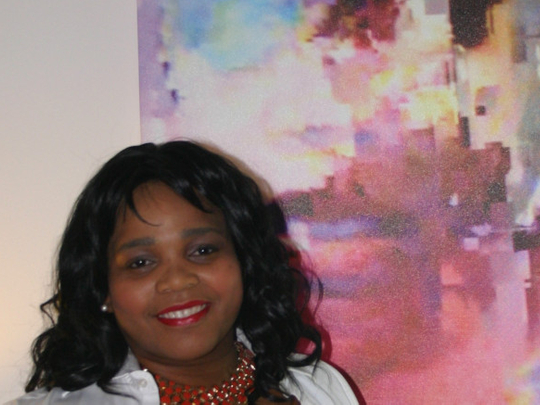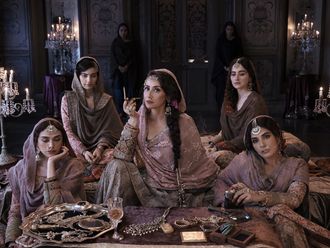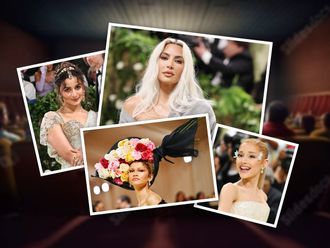
Samantha Griffith is a lawyer by profession. But she is also an artist, and often paints to unwind after a busy day at work. The Dubai based British lawyer has never been interested in exhibiting her work in public; but an emotional meeting with an old acquaintance earlier this year changed that.
The meeting inspired her to create a series of artworks, titled “Fractured”, that explores the physical and psychological impact of mental illness on a human being; and to exhibit the work in public to help create greater awareness about mental illness.
As an amateur artist, Griffith found the perfect platform to showcase her work and convey her message to a wide audience in the International Emerging Artist Award (IEAA). Launched in 2012, the IEAA, which is based in Dubai, is the UAE’s first contemporary art competition, and is open to artists from the UAE and around the world.
This year IEAA received over 1500 entries from 14 countries, and among the artworks shortlisted for the award was Griffith’s painting, titled “Thoughts”, from her “Fractured” series. Besides being exhibited in the IEAA’s online gallery, the artwork was also displayed at an exhibition of selected works in Dubai. It also travelled to a show in Istanbul, and is slated to be a part of other shows organised by IEAA in Singapore and Marseille.
In her “Fractured” series, Griffith has used a combination of photography and acrylic on canvas painting to depict the gradual internal breakdown caused by mental illness, and its external manifestation as the illness progresses. We spoke to the artist about her unusual choice of theme and her unique technique. Excerpts:
Why did you choose the theme of mental illness?
Many years ago a friend of mine had committed suicide, and I have never been able to forget that, or understand why she did it. Last summer I met her mother for the first time since that tragic event, and I was amazed at how composed she looked and how she had managed to move on, while I was still struggling to deal with it. That meeting made me realise that I too must deal with the issue, and I felt that the best way to do that was through art.
I did a lot of research on mental illness. I read about different types of mental illnesses, different stages of the illness, and how those suffering from it try to hide it behind a smile. The ten paintings in the “Fractured” series express the fact that a person suffering from mental illness may look quite normal on the outside, but there is so much confusion and turmoil going on inside.
What techniques did you use to depict the mental breakdown?
I began with a photograph of a woman’s face, and painted over it with acrylic paints to create the feeling of a gradual fragmentation of the mind and body. I deliberately used a lighter palette, because mental illness is usually depicted as something dark; but the truth is that the people we should be really concerned about are not the ones who look sad or disturbed, but the ones who have this permanent façade of happiness.
The first three paintings in the series depict the early stages of the illness, where she is hiding the turmoil within. Her eyes are closed because she does not want anybody to see her tortured soul. The next two paintings are about the decay when the internal breakdown becomes visible externally. The eyes are darker here to reflect the growing darkness inside. The three subsequent paintings represent the loneliness and dark thoughts in which she gradually loses herself, shutting people out from her fragmented, crumbling world. And in the last two pieces, her face appears like a death mask — dark, decayed, fractured, with gangrenous flesh and barely looking human.
What is the meaning of the architectural elements you have blended into the face?
The buildings symbolise structure. They are quite visible in the initial paintings, but I have put in a lot of white patches to represent the missing bits of the mind. As the series progresses the structure breaks down and ultimately vanishes.
How has the experience of creating the work and exhibiting it in public affected you?
My aim with this series was to work sincerely and honestly to create something meaningful. The experience of researching and creating it has been cathartic and it has helped me to deal with something that I have been struggling with for over 15 years. I found the IEAA online and was pleasantly surprised when my work was shortlisted. The best thing about being selected by IEAA is that my work will be seen by viewers around the world, thus helping to raise greater awareness about mental illness. It also gave me the confidence to have an exhibition of the entire “Fractured” series in London.
The IEAA online gallery can be viewed at www.emergingartistaward.com
Jyoti Kalsi is an arts enthusiast based in Dubai.













